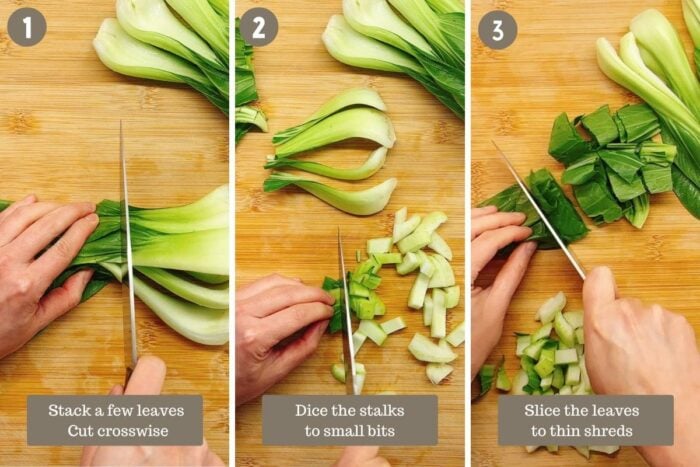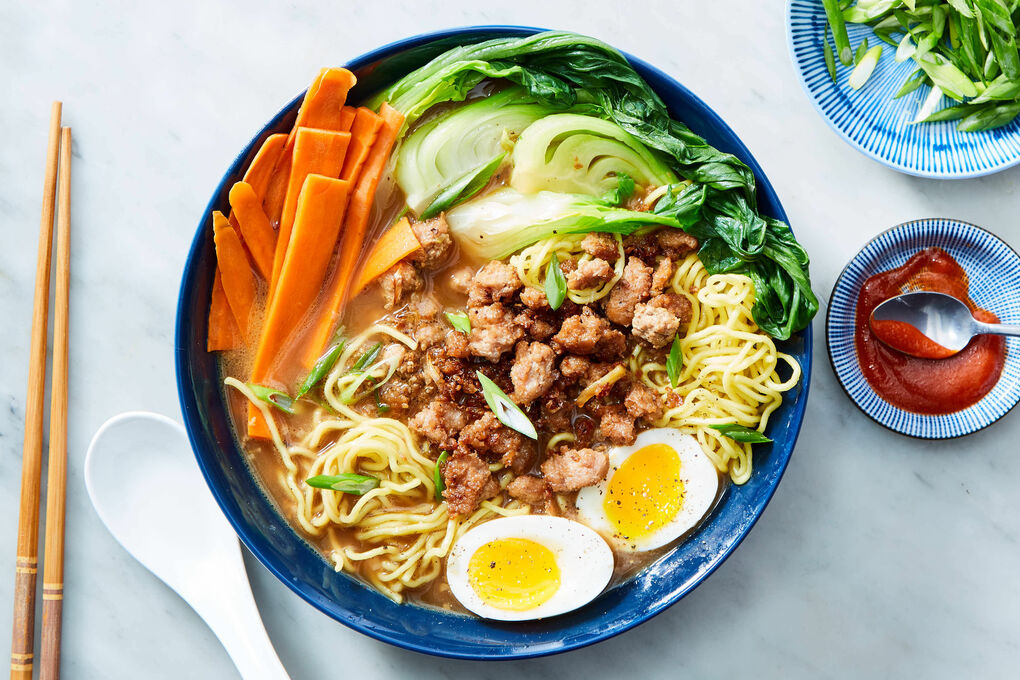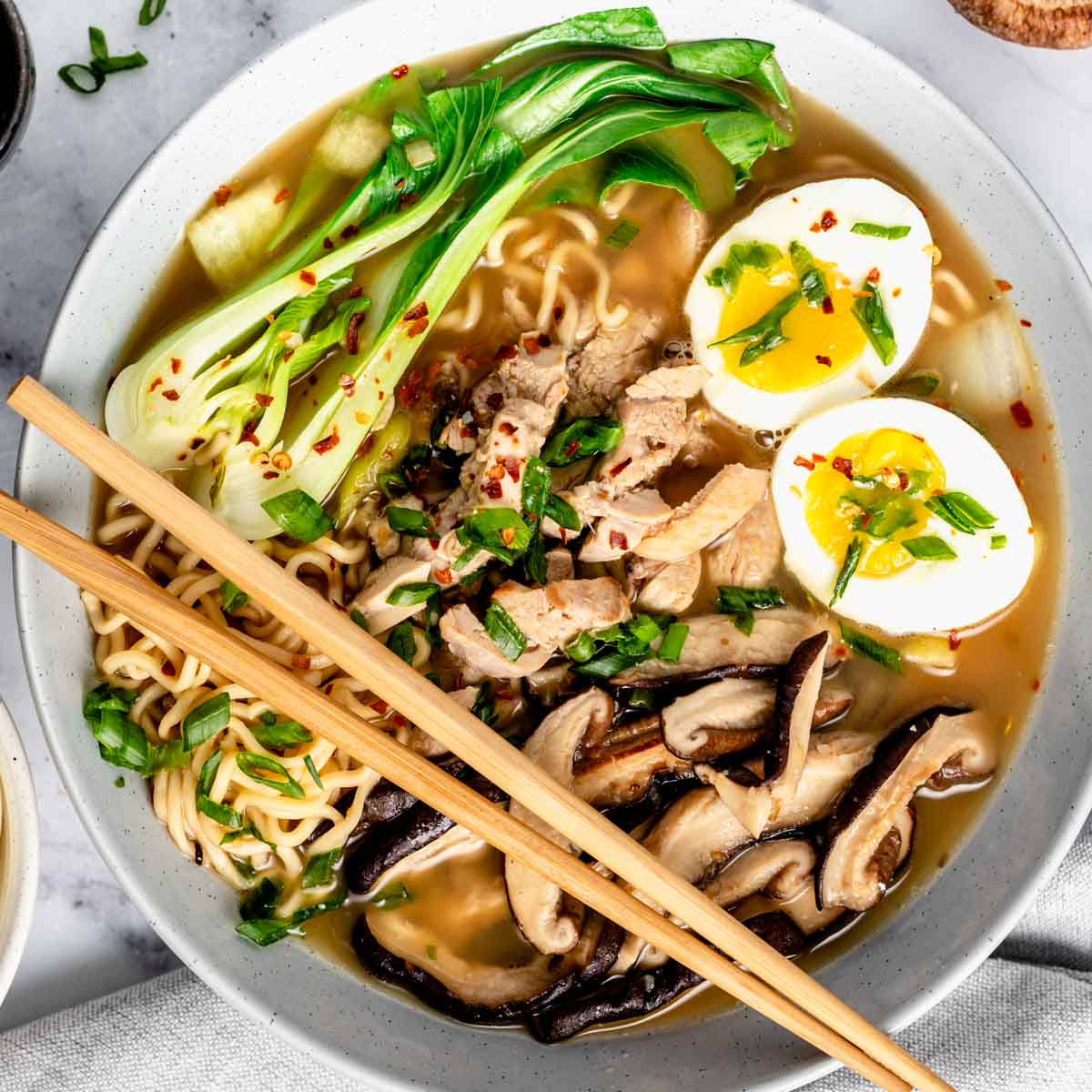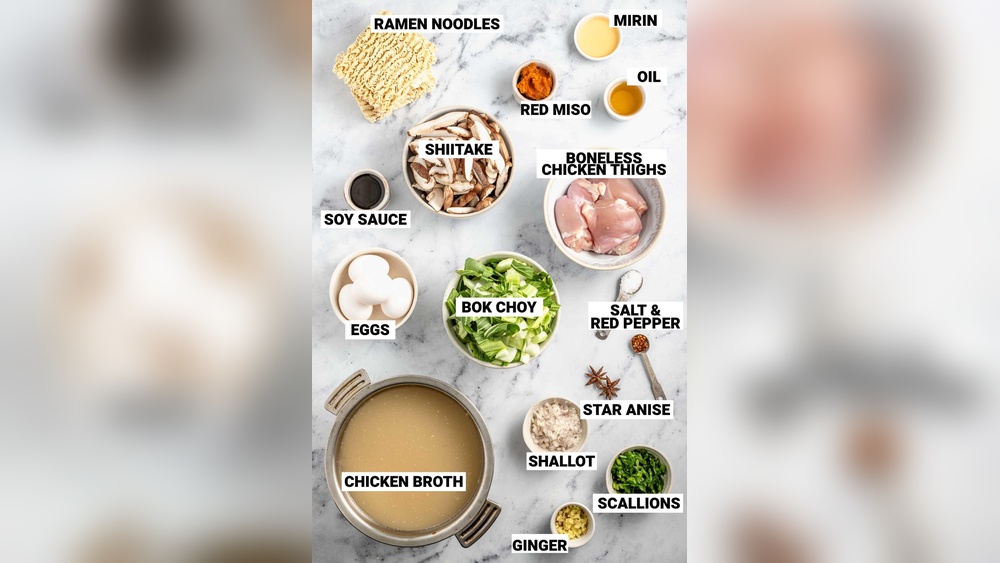If you love ramen and want to add a fresh, crunchy twist, bok choy is the perfect choice. But how do you cook bok choy for ramen so it’s tender, flavorful, and not soggy?
You might be wondering if you should add it raw, sauté it, or simmer it in the broth. Getting it right can take your bowl from good to unforgettable. In this guide, you’ll learn simple, easy methods to cook bok choy just the way you like it for your ramen.
Stick with me, and you’ll never settle for bland greens in your soup again!
Choosing Bok Choy
Bok choy comes in different types. The most common are baby bok choy and regular bok choy. Baby bok choy has smaller, tender leaves and a milder taste. Regular bok choy has larger stalks and a crunchier texture. Both work well in ramen, but baby bok choy cooks faster.
Look for fresh bok choy with bright green leaves and firm white stalks. Avoid yellow or wilted leaves. The stalks should be crisp and not soft or slimy. Fresh bok choy smells clean and slightly sweet.
| Type | Description | Best For |
|---|---|---|
| Baby Bok Choy | Small, tender leaves and thin stalks | Quick cooking, delicate texture |
| Regular Bok Choy | Larger stalks, crunchier texture | Longer cooking, more bite |
Preparing Bok Choy
Start by rinsing bok choy under cold water to remove dirt. Pay attention to the base where dirt hides. Separate the stalks from the leaves for even cooking. Use a sharp knife to slice the stalks into bite-sized pieces. Cut leaves into larger chunks since they cook faster. Thicker stalks need more cooking time than tender leaves. This method helps bok choy cook evenly and taste better in ramen.
Cooking Methods
Simmering in broth softens bok choy well for ramen. Add bok choy to the hot broth with noodles. Let it cook gently for a few minutes until tender but not mushy.
Blanching is quick and keeps bok choy crisp. Boil water in a separate pot, add bok choy for 30 seconds, then drain. Add it to ramen just before serving or simmer briefly in broth.
Sautéing and stir-frying give bok choy a nice flavor. Heat oil in a pan on medium-high heat. Cook bok choy until just tender to keep a slight crunch. Add cooked bok choy to ramen before serving.
Using raw bok choy works too for crunchy texture. Thinly slice and add on top of hot ramen. The heat from broth will soften it slightly without cooking fully.
Timing And Texture Tips
The stalks of bok choy take longer to cook than the leaves. Cook the stalks first for about 2-3 minutes. Then add the leaves for just 30 seconds to 1 minute. This method keeps the leaves tender but not soggy.
Avoid overcooking by watching the bok choy closely. Overcooked bok choy becomes mushy and loses its bright color. Stop cooking as soon as the stalks are soft but still firm.
To maintain crispness, use quick cooking methods like sautéing or blanching. These keep the bok choy fresh and crunchy. Add bok choy to ramen just before serving to keep texture.
Flavor Enhancements
Seasoning bok choy enhances ramen’s flavor greatly. Using garlic adds a rich, savory note that blends well with the broth. Spices like ginger and red pepper flakes give a gentle warmth without overpowering the dish.
Pairing bok choy with the right broth is key. Light broths like shoyu or clear chicken stock let the vegetable’s fresh taste shine. Richer broths like miso or tonkotsu add depth and make the greens feel heartier.
A small drizzle of sesame oil or a sprinkle of toasted sesame seeds can create a lovely nutty aroma. These simple touches make the bok choy a perfect match for your ramen bowl.

Adding Bok Choy To Ramen
Bok choy should be added to ramen at the right time for best taste and texture. Add the thicker white stalks earlier because they take longer to cook. The green leaves cook very fast and can be added last. This way, both parts stay tender and fresh.
For a softer texture, put bok choy in the simmering broth with the noodles. For a crunchier bite, add it near the end of cooking or just before serving. Stir-frying bok choy separately keeps it crisp and adds a nice flavor.
- Cook white stalks 2-3 minutes before leaves.
- Add green leaves 1 minute before serving.
- Use simmering broth for soft bok choy.
- Stir-fry for crisp texture.
Present bok choy neatly in ramen bowls to look fresh and colorful. Place it on top or on the side for a nice touch.
Common Mistakes To Avoid
Overcooking bok choy can make it soft and mushy. This ruins the crisp texture that works well in ramen. Cook stalks and leaves just until tender, about 1-2 minutes in hot broth or pan. Watch closely to avoid sogginess.
Ignoring stalk thickness leads to uneven cooking. The thick white stalks need more time than the thin green leaves. Cut them separately and add stalks to the pot first. Add leaves later for perfect texture.
Skipping proper cleaning risks grit or dirt in your ramen. Rinse bok choy under cold water, especially near the stalk base. Dirt can hide between the leaves. Clean well for a fresh, tasty bowl.

Variations And Recipes
Chicken and Bok Choy Ramen blends tender chicken pieces with crisp bok choy. The chicken adds protein, while bok choy gives a fresh crunch. Simmer chicken in broth first for rich flavor. Add bok choy near the end to keep it crisp. This combo makes a warm, hearty meal.
Miso Ramen with Mushrooms and Bok Choy mixes earthy mushrooms with savory miso broth. Bok choy adds a mild, sweet taste and texture. Cook mushrooms and bok choy separately, then add to the miso soup. This dish balances deep umami with fresh greens beautifully.
Spicy Pork Ramen with Bok Choy features spicy pork for bold heat. Bok choy cools and balances the spice. Stir-fry pork with chili sauce until cooked. Add bok choy last to keep it crunchy. The mix creates a flavorful, spicy, and fresh bowl.

Frequently Asked Questions
Do You Cook Bok Choy Before Putting It In Ramen?
Yes, cook bok choy before adding it to ramen. Simmer, blanch, or sauté until tender but still crisp.
How To Cut Bok Choy For Ramen Noodles?
Cut bok choy by separating stalks and leaves. Slice stalks into 1-inch pieces and roughly chop leaves. Add to ramen broth or sauté briefly.
How Do You Cook Bok Choy For Noodles?
Cook bok choy by simmering it in broth with noodles, blanching briefly, or stir-frying until just tender. Separate stems and leaves, cooking stems longer. Add to noodles before serving to keep texture crisp and fresh. Avoid overcooking for best flavor and crunch.
How Is Bok Choy Supposed To Be Cooked?
Cook bok choy by simmering in broth, blanching, or sautéing until tender but still crisp. Add to ramen just before serving. Separate stalks and leaves for even cooking. Avoid overcooking to retain freshness and crunch. Thin slices can be added raw for extra texture.
Conclusion
Cooking bok choy for ramen adds fresh flavor and nice texture. Cook the stems longer than the leaves for even softness. Avoid overcooking to keep the crunch and vibrant color. You can simmer, blanch, or stir-fry bok choy based on your taste.
Adding bok choy at the right time makes your ramen more delicious. Enjoy your bowl with this simple, healthy vegetable. Try different methods to find your favorite way to cook bok choy for ramen.

Yes, working as , Food Blogger and Product Reviewer for last 6 years. Here you will get amazing deals for Smart kitchen products. I am your best source for the latest update in cooking trends. I provide insightful articles, reviews, and analysis on cutting-edge kitchen gadget. My mission is to empower readers with the knowledge they need to stay ahead in a rapidly evolving coking world. Join me as we explore the future of food technology and how it shapes our lives today and tomorrow.




